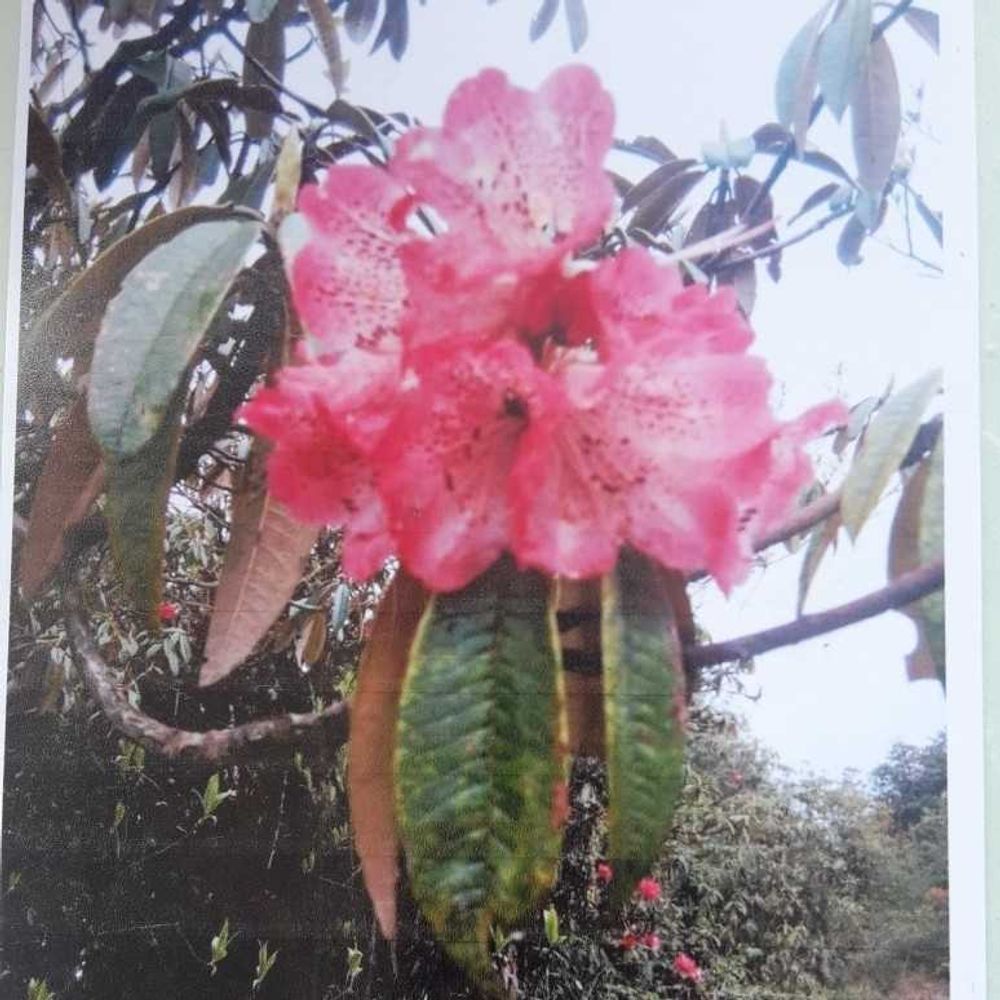Cumberland azalea
(Rhododendron cumberlandense)

Description
“Pet poisonous” – Toxic parts: entire plant Rhododendron cumberlandense, commonly known as the Cumberland Azalea, is a deciduous shrub belonging to the family Ericaceae. The species is native to the Appalachian Mountains in the southeastern United States, ranging from Kentucky to Alabama. The Cumberland Azalea is highly valued for its ornamental attributes, including its vibrant flower colors and dense foliage. This article provides an in-depth analysis of the botanical characteristics, ecology, and horticultural aspects of Rhododendron cumberlandense. Taxonomy and Nomenclature Rhododendron cumberlandense was first described by Henry Skinner and John Kunkel Small in 1930. The species was formerly classified as Rhododendron bakeri or Azalea bakeri, but has since been taxonomically reevaluated. The genus Rhododendron comprises over 1,000 species, including azaleas and other flowering shrubs. The name Rhododendron is derived from the Greek words "rhodon" (rose) and "dendron" (tree), referring to the rose-like flowers of many species in this genus. Description Rhododendron cumberlandense is a deciduous shrub that typically grows to a height of 3 to 6 feet (0.9 to 1.8 meters), with a similar spread. The plant forms a dense, multi-stemmed clump with an upright, spreading habit. The branches are slender and covered with fine, reddish-brown hairs. Leaves: The leaves of Rhododendron cumberlandense are simple, alternate, and elliptic to oblanceolate in shape. They measure 1.2 to 3 inches (3 to 7.5 cm) in length and 0.4 to 1 inch (1 to 2.5 cm) in width. The leaves are dark green above and paler beneath, with a smooth or slightly hairy surface. In autumn, the leaves turn a vibrant shade of yellow or orange before falling. Flowers: The flowers of the Cumberland Azalea are tubular, with a narrow base and a flared, funnel-shaped corolla. They are typically 1 to 1.5 inches (2.5 to 3.8 cm) long and 1 to 2 inches (2.5 to 5 cm) in diameter. The flowers are borne in clusters (called trusses) at the ends of the branches and are usually orange to red or occasionally yellow, with a slightly darker, often reddish-orange blotch on the upper petal. Blooming occurs in late spring to early summer, typically from May to June. Fruit and Seeds: After flowering, Rhododendron cumberlandense produces small, dry, dehiscent capsules that contain numerous tiny seeds. The seeds are wind-dispersed and germinate readily in suitable conditions. Ecology and Habitat Rhododendron cumberlandense is native to the southeastern United States, where it is found in the Appalachian Mountains from Kentucky and Virginia southward to Georgia and Alabama. The species inhabits a variety of habitats, including mixed hardwood forests, mountain slopes, and rocky, well-drained soils along stream banks. Cumberland Azalea is well-adapted to its native environment, tolerating a range of soil types, including acidic, well-drained, and loamy soils. It prefers partial shade but can also grow in full sun if adequate moisture is available. The plant has a shallow root system, making it susceptible to drought and requiring consistent moisture for optimal growth. Cultivation and Uses Rhododendron cumberlandense is a popular ornamental shrub in gardens and landscapes, prized for its vibrant flower color and dense, compact growth habit. It is an excellent choice for woodland gardens, mixed borders, and foundation plantings. The plant also attracts pollinators, including butterflies and hummingbirds, which add to its appeal. To successfully cultivate Rhododendron cumberlandense, the following conditions should be met: Soil: The plant requires acidic, well-drained, and humus-rich soil. It is intolerant of heavy clay or poorly drained soils, which can lead to root rot. Adding peat moss, compost, or other organic matter can help improve soil conditions. Light: Partial shade is ideal, but the plant can tolerate full sun if adequate moisture is available. In regions with hot summers, protection from afternoon sun is recommended. Water: Consistent moisture is essential for the shallow root system of Rhododendron cumberlandense. Mulching with organic materials, such as pine needles or shredded bark, can help conserve soil moisture and maintain a cool root zone. Pruning: Minimal pruning is necessary for the Cumberland Azalea. If desired, pruning can be done immediately after flowering to shape the plant and remove any dead or damaged wood. Fertilization: An acid-forming fertilizer designed for Rhododendrons and azaleas can be applied in early spring, following the manufacturer's recommendations. Avoid over-fertilization, which can lead to excessive foliage growth and reduced flowering. Propagation: Rhododendron cumberlandense can be propagated by seeds, cuttings, or layering. Seeds require cold stratification and should be sown in a well-draining medium. Softwood or semi-hardwood cuttings can be taken in summer and treated with a rooting hormone before being placed in a moist, well-draining medium. Conservation Status Rhododendron cumberlandense is not currently considered an endangered or threatened species. However, like many native plants, it faces challenges from habitat loss, invasive species, and climate change. Conservation efforts should focus on preserving natural habitats, managing invasive species, and promoting the cultivation and appreciation of native plants, such as the Cumberland Azalea. Conclusion Rhododendron cumberlandense is a beautiful and resilient native plant with numerous ornamental qualities. As a plant expert, I encourage gardeners to consider incorporating this species into their landscapes to support native biodiversity and enjoy its striking flowers and foliage. With proper care and attention to its cultural requirements, the Cumberland Azalea can be a rewarding and long-lived addition to gardens in its native range and beyond.
Taxonomic tree:







